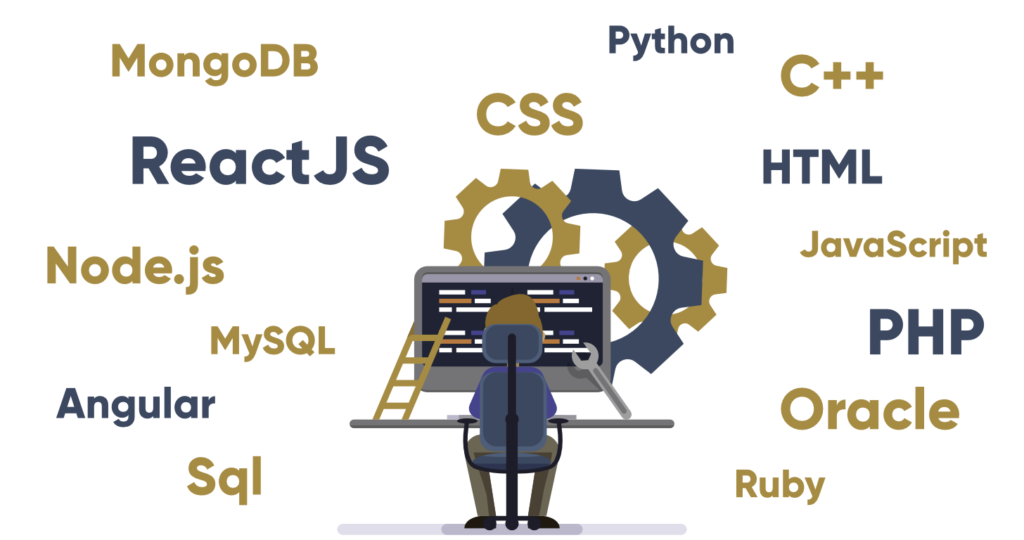Full-stack development is a valuable skill set for anyone looking to become a versatile developer, capable of managing both front-end development and back-end development tasks. Building a full-stack application from scratch may seem daunting, but with the right guidance, even beginners can create a functional app. This guide will walk you through the essential steps to build your first app, covering key components and concepts in code learning, programming lessons, and practical application.

What is Full-Stack Development?
Before diving into building your app, it’s essential to understand what full-stack development entails. Full-stack developers work with both front-end (client side) and back-end (server side) technologies, enabling them to create complete applications that interact with users and databases. Full-stack development often involves:
- Front-End Development: Handling everything that the user interacts with, such as the design, layout, and interactive features. Common front-end technologies include HTML, CSS, JavaScript, and libraries like React or Vue.
- Back-End Development: Managing server-side tasks, such as processing data, managing requests, and interacting with databases. Popular back-end languages include Node.js, Python, and Ruby, along with databases like MySQL and MongoDB.
By learning full-stack development, you become proficient in both areas, making you a versatile developer who can build, maintain, and troubleshoot complete applications.
Step 1: Set Up Your Development Environment
Every development project starts with a solid setup. Download and install a code editor like Visual Studio Code or Atom, which supports HTML, CSS, JavaScript, and back-end languages. Additionally, you’ll need Node.js and npm (Node Package Manager) for back-end development, as these will allow you to install and manage libraries.
Installing Git is also recommended for version control. Using Git, you can track changes to your code, collaborate with others, and manage different versions of your app. Creating a GitHub repository will allow you to store your project online, providing backup and collaboration options.
Step 2: Start with Front-End Basics
The first part of building your full-stack app involves creating the front end. Begin by designing your app interface using HTML for structure, CSS for styling, and JavaScript for interactivity. Start small with a basic webpage layout and add elements like buttons, forms, and text.
For beginners, platforms like online coding tutorials or coding workshops offer guided lessons on HTML, CSS, and JavaScript. Once you feel confident, consider using frameworks like React or Vue to speed up development. These frameworks provide reusable components, making it easier to build a dynamic user interface.
Step 3: Create Interactive Features with JavaScript
JavaScript is the core language for adding interactivity to your application. Learn how to handle events like clicks, form submissions, and API requests. JavaScript allows you to manipulate HTML elements dynamically, so you can create effects like animations, dropdown menus, and more.
If you’re new to coding, start with coding exercises focused on JavaScript fundamentals. Mastering JavaScript is crucial in full-stack development, as it’s used in both front-end (client side) and back-end (server side) programming with frameworks like Node.js.
Step 4: Set Up Your Server with Node.js and Express
Once the front end is complete, it’s time to move on to back-end development. Start by setting up a server using Node.js and Express. Node.js allows you to write JavaScript on the server side, and Express is a framework that simplifies routing and handling requests.
Your back-end server will receive data from the front end, process it, and send it back as necessary. For example, if a user submits a form on the front end, the back end will handle the request, save the data to a database, and send a response.
- Install Express: Open your terminal, navigate to your project folder, and run
npm install expressto install Express. - Set Up Routing: Use Express to set up routes that will handle different requests, such as GET and POST.
- Test Your Server: Run your server locally to ensure it’s working correctly and responding to requests.
Step 5: Connect to a Database
A full-stack app requires a database to store and retrieve data. Common databases for full-stack apps include MongoDB (NoSQL) and MySQL (SQL). MongoDB is known for its flexibility and scalability, while MySQL is reliable for structured data storage.
- Choose Your Database: If you’re handling unstructured data, MongoDB may be ideal. For structured data, MySQL is a good choice.
- Install Database Packages: Use npm to install database packages, like
mongoosefor MongoDB ormysqlfor MySQL. - Set Up Your Schema: Define the data structure with schemas, which outline the type of data each entry will contain, ensuring data consistency.
Learning how to integrate a database is a key part of coding education in full-stack development, as it allows you to build dynamic applications where data flows seamlessly between the front end and back end.
Step 6: Implement User Authentication
Adding user authentication allows users to create accounts, log in, and access personalized features within your app. This is a crucial step for many full-stack applications, especially those that manage user-specific data.
Authentication Steps:
- Set Up Login and Registration Forms: Use the front end to capture usernames and passwords.
- Hash Passwords: Use libraries like
bcryptto hash passwords before saving them to the database, ensuring user data is secure. - Use JSON Web Tokens (JWT): Generate JWTs on successful login to manage user sessions securely.
Implementing authentication gives your application a professional touch and enhances user experience. Many coding workshops and online courses include user authentication projects to help you master these techniques.
Step 7: Add Advanced Features and APIs
After building the core features of your app, consider adding advanced features like third-party APIs, real-time chat, or data visualization. For example, you might integrate a weather API to display local weather or add a map feature with the Google Maps API.
Advanced Features:
- Third-Party APIs: Learn to fetch data from external APIs to add more functionality to your app.
- Real-Time Features: Using libraries like Socket.io allows for real-time communication, ideal for chat apps or live updates.
- Data Visualization: Integrate libraries like D3.js to visualize data within your app, enhancing the user experience.
Building additional features not only enhances your app but also strengthens your understanding of coding challenges and problem-solving within a full-stack context.
Step 8: Deploy Your App
Once your app is complete, it’s time to deploy it so users can access it online. Popular platforms like Heroku and Netlify provide straightforward ways to deploy full-stack applications.
Deployment Steps:
- Prepare Your Code: Make sure your code is clean and optimized.
- Choose a Hosting Service: Heroku is popular for full-stack Node.js apps, while Netlify works well for front-end projects.
- Deploy and Test: Follow the platform’s deployment instructions and test your app to ensure everything works smoothly.
Deploying your app is an exciting final step that allows you to share your project with others, whether for your portfolio, job applications, or personal use.

Becoming a Full-Stack Developer
Building a full-stack application from start to finish is a rewarding process that requires dedication and consistent practice. By following this step-by-step guide, you’ve touched on both front-end development and back-end development fundamentals, making you more confident in your skills.
Mastering full-stack development involves continual learning and practice with coding exercises, programming lessons, and coding challenges. Many developers find that working through real-world programming projects provides the best learning experience, allowing you to build a portfolio and showcase your skills to potential employers.
Remember, coding is a journey, and each project brings you closer to becoming a proficient, well-rounded developer. Embrace the challenges, keep learning, and soon you’ll find yourself able to create complex, dynamic applications from scratch.




